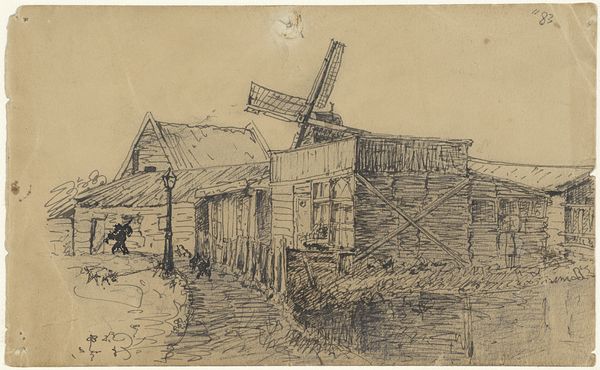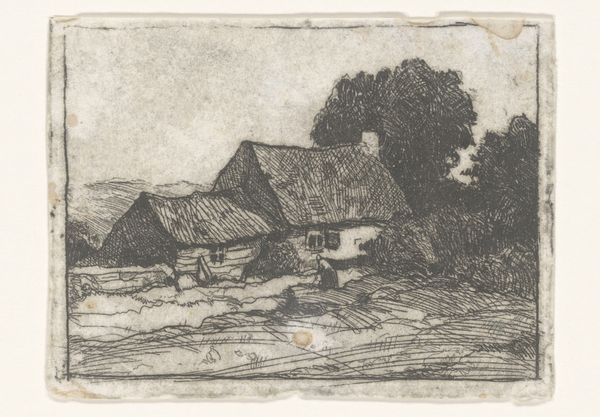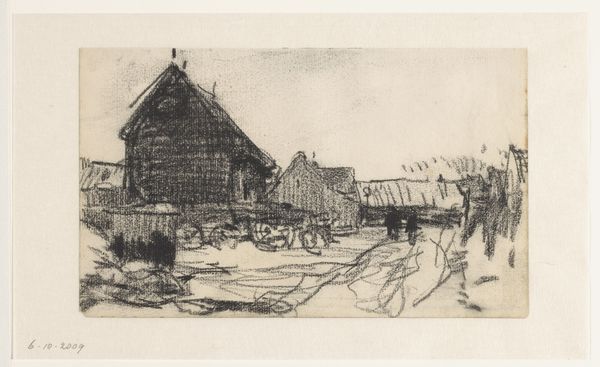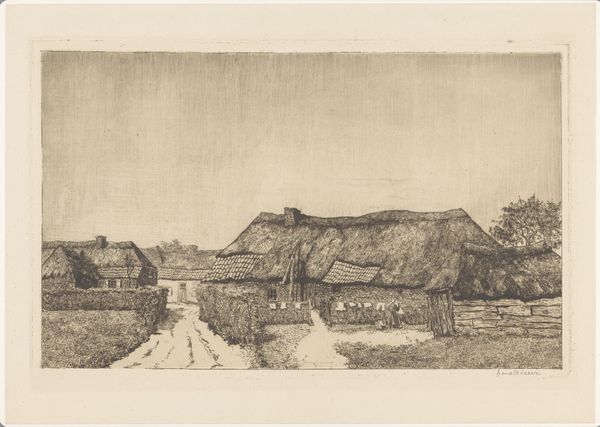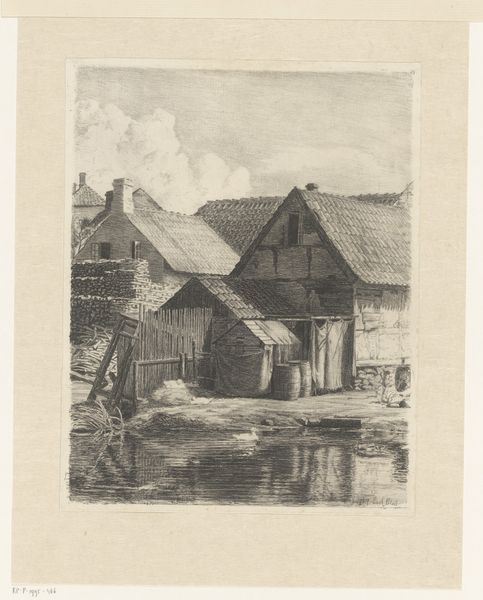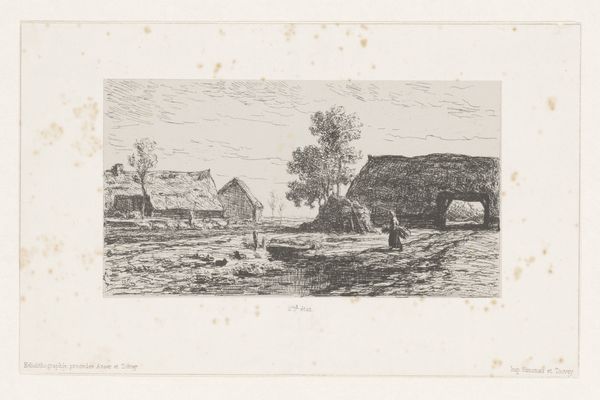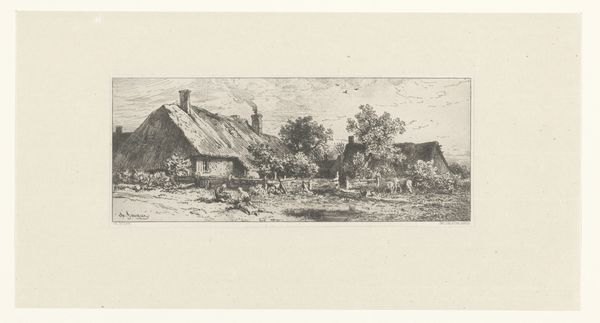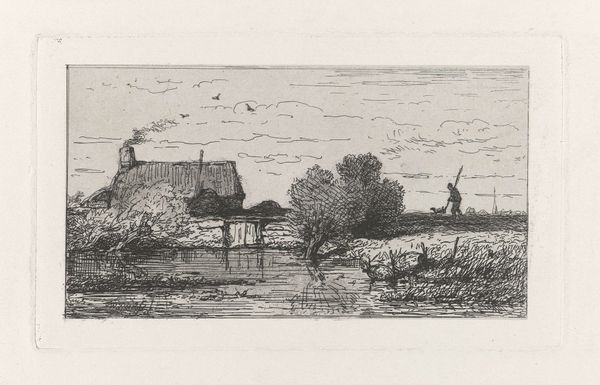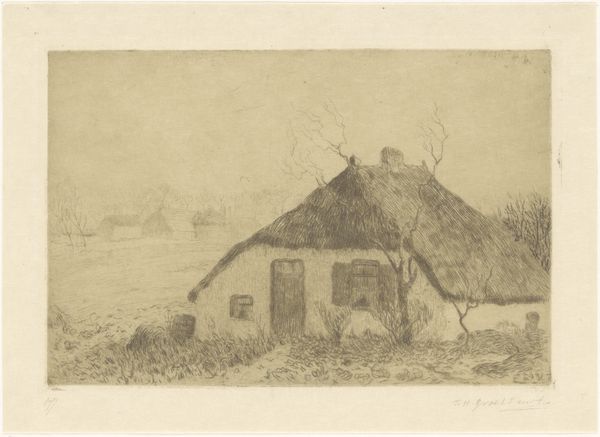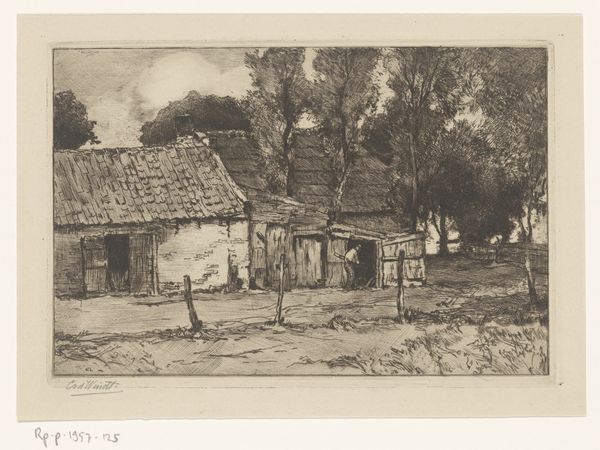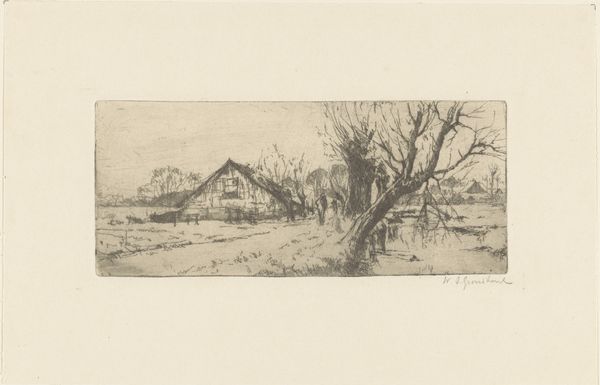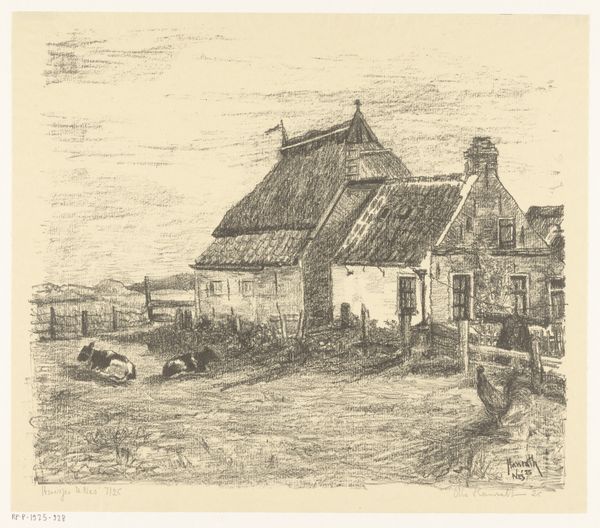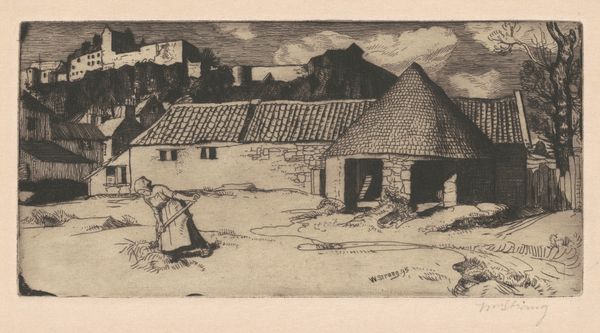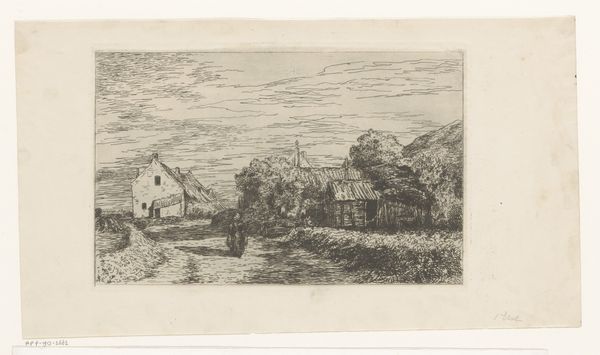
print, etching
#
dutch-golden-age
# print
#
etching
#
landscape
#
etching
#
realism
Dimensions: height 129 mm, width 181 mm
Copyright: Rijks Museum: Open Domain
Editor: Here we have Willem Adrianus Grondhout's etching, "Molen zonder wieken in Voorburg," created sometime between 1888 and 1931. I'm immediately struck by the stillness, almost a sense of abandonment, conveyed by the dilapidated windmill. How do you interpret this work, especially considering its historical context? Curator: That's a great observation. For me, this piece resonates with themes of obsolescence and the changing landscape of Dutch society during that period. Windmills were not just practical tools but also powerful symbols of Dutch identity and ingenuity. Seeing one without sails suggests a confrontation with modernity. What happens to tradition in times of modernization and who bears the costs? Editor: That makes a lot of sense. The printmaking process itself—etching—also feels very intentional now. Do you see any feminist or other social critiques embedded in the artwork, beyond just rural change? Curator: Absolutely, if we think about the labor typically associated with these rural settings, we can question whose work is being erased when these traditional structures fall into disuse. Were these mills important social hubs, potentially also sites of female labor and community? Its dismantling suggests an economic shift impacting labor roles. Are we also looking at gendered aspects of labour being challenged or rendered invisible? Editor: That's a perspective I hadn't considered. It really shifts the reading from a simple landscape to a commentary on labor and possibly gendered roles. Curator: Exactly. Art provides space to consider these intersections, to recognize that what seems like a quaint landscape can hold layers of meaning related to gender, class, and historical transformation. Editor: I'm finding myself looking at it with fresh eyes now. Thanks for making the sociopolitical connections apparent. Curator: My pleasure. These connections remind us to stay vigilant, interrogating how art mirrors—and shapes—our understanding of the world.
Comments
No comments
Be the first to comment and join the conversation on the ultimate creative platform.
